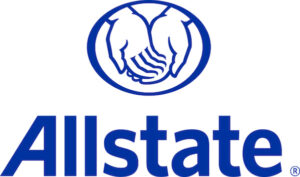Fitch Ratings reaffirmed Bank of America Corporation’s (NYSE: BAC) Long‐Term Issuer Default Rating (IDR) at AA‐ and Short‐Term IDR at F1+ on June 3, 2025. Bank of America, N.A.’s IDRs were also maintained at AA and F1+, respectively, with a stable outlook. Below is a concise analysis of the key drivers behind Fitch’s decision, implications for investors, and how to monitor BofA’s credit health using FMP APIs.
Strong Intrinsic Profile and Diversified Business Mix
Bank of America’s Viability Rating (VR) of aa‐ reflects its leadership in core segments—consumer banking, wealth management, and corporate finance. Key strengths include:
-
Market Leadership: Leading or near‐leading market share across mortgages, credit cards, and investment banking.
-
Diversification: Balanced mix between net interest income, fees, and trading revenue helps stabilize earnings through economic cycles.
-
Prudent Risk Management: Disciplined approach to underwriting, credit provisioning, and reserve building minimizes volatile swings.
Because BofA combines retail deposits with investment‐banking services, it can offset pressure in one segment with strengths in another. This balanced profile gives Fitch confidence in the bank’s ability to navigate downturns.
Capital and Liquidity Discipline
Fitch highlighted two metrics that underpin BofA’s resilience:
-
Double Leverage < 120 percent
BofA’s parent‐to‐subsidiary capital allocation remains conservative. Lower double leverage means less reliance on parent capital injections, reducing stress on the consolidated balance sheet. -
Prudent Liquidity Management
BofA maintains high‐quality liquid assets (HQLA) at both the parent company and intermediate holding company (IHC) levels. This buffer protects against sudden funding shocks.
By keeping capital ratios well above regulatory minimums and holding ample liquidity, BofA can weather short‐term volatility—whether triggered by rate shifts or sudden deposit outflows.
Improving Asset Quality
After a period of normalization, BofA’s credit metrics have stabilized:
-
Net Charge‐Offs Declined to 0.5 percent of Loans in Q1 2025
Lower charge‐offs in commercial real estate (CRE) office loans drove this improvement. Fitch expects net charge‐off ratios to remain modest as provisioning remains adequate. -
Loan-Loss Reserves and Coverage Ratios
Reserves for potential defaults have remained stable or increased slightly, indicating management’s cautious stance on commercial and consumer exposures.
Improving asset quality reduces earnings volatility and underpins the stable outlook for long-term IDRs.
Implications for Investors
1. Monitor BofA’s Financial Ratios
Use the Ratios (TTM) API to pull trailing-twelve-month metrics such as return on assets (ROA), efficiency ratio, and net charge-off ratio. Tracking these ratios over time helps validate whether asset quality improvements continue. For example:
“By querying the Ratios (TTM) API, analysts can confirm that BofA’s net charge-off ratio has remained under 1 percent for four consecutive quarters.”
2. Track Credit Ratings and ESG Scores
Leverage the Company Rating API to fetch up-to-date credit ratings, Viability Ratings, and ESG risk scores. Comparing BofA’s ratings against peers (e.g., JPMorgan, Citigroup) highlights relative strengths or weaknesses. Key data points include:
-
Latest Long- and Short-Term IDRs
-
Viability Rating trends
-
ESG risk scores and trends
3. Benchmark Against Peer Banks
Beyond BofA, pull the same Ratios (TTM) and Company Rating API data for large U.S. G-SIBs. A comparative dashboard can reveal if any peers face higher double leverage, weaker liquidity, or deteriorating credit metrics—information that can influence sector weightings or sector rotation strategies.
Key Takeaways
-
Fitch’s AA-/F1+ Affirmation
Reflects BofA’s leading business mix, conservative capital allocation (double leverage < 120 percent), and strong liquidity buffers. -
Asset Quality Stabilization
Net charge-offs at 0.5 percent of loans in Q1 2025 demonstrate improving loan performance, especially in commercial real estate. -
Stable Outlook
Fitch expects BofA’s diversified revenue streams and disciplined risk management to support earnings stability—even if interest rates remain elevated or CRE stress persists.
To stay informed on Bank of America’s evolving credit profile:
-
Use the Company Rating API for live credit ratings, Viability Ratings, and ESG scores.
-
Pull key financial ratios (net charge-off ratio, ROA, efficiency ratio) via the Ratios (TTM) API to validate Fitch’s assessment and identify trends.
Integrating these data feeds into your analysis toolkit will ensure you’re tracking the metrics that matter—helping you forecast potential rating changes, benchmark against peers, and make data-driven investment decisions.




